Kentucky: Day 4 – Wild Turkey and More Barrels

Morning in Lexington. We were all pretty tired after a long day and a late night, but we braved the 27 degree weather, coffeed up at a nearby Starbucks, and loaded into the car for our drive out to Wild Turkey.
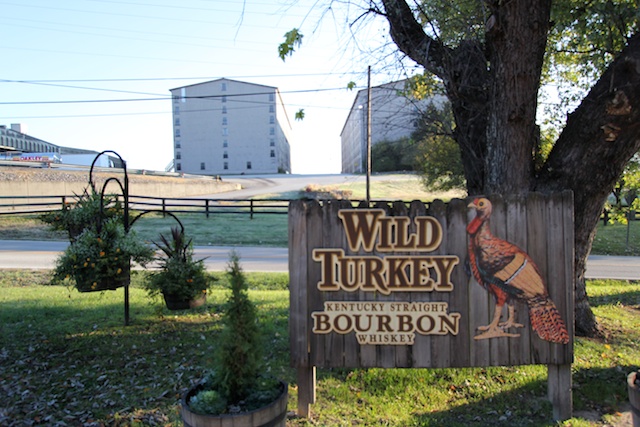
Of all the distilleries we've visited in Kentucky, Wild Turkey is in perhaps the most pristine and picturesque location. The bridge over the Kentucky river reveals the new visitor's center and the rolling green hills spread out along the 700 acre estate. The morning air was cool and crisp as we exited the car and walked into the main office to meet up with Eddie Russell, son of legendary WT master distiller Jimmy Russell.
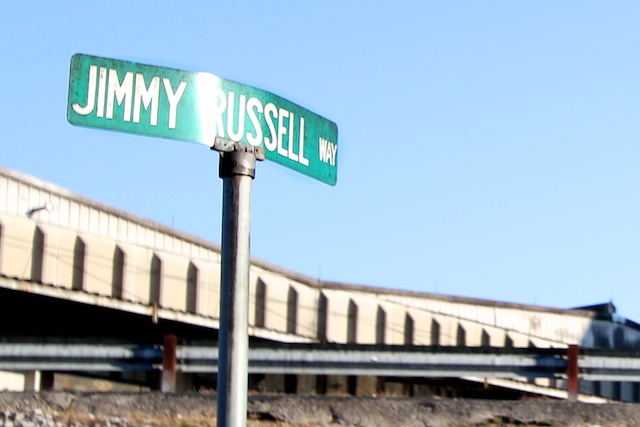
Jimmy Russell is in his 59th year working in the whiskey business and he's one of, if not the most, respected distillers in the history of Bourbon. It's because of his dedication for tradition and his unwillingness to change, even in the face of corporate takeovers, that Wild Turkey has stayed true to one recipe and one singular vision. While Buffalo Trace, Four Roses, and Heaven Hill get a lot of love from the insiders –with the Pappys, the Parkers, the Staggs, and the cask strength, limited edition releases– I don't think it will be much longer before Wild Turkey joins that bunch. Now that Eddie has pushed for more single barrel, higher proof edition editions from Campari, we're about to get a much closer look at what the Russells can really do.
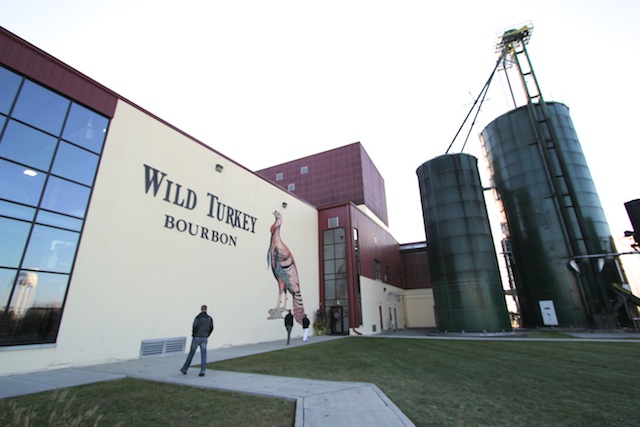
The new distillery at Wild Turkey has been in operation since 2010. The old site nearby, where everything currently in bottle was produced, has since been demolished. It's one of the cleanest and most utility-focused facilities we've ever visited. Everything is centered on quality control.
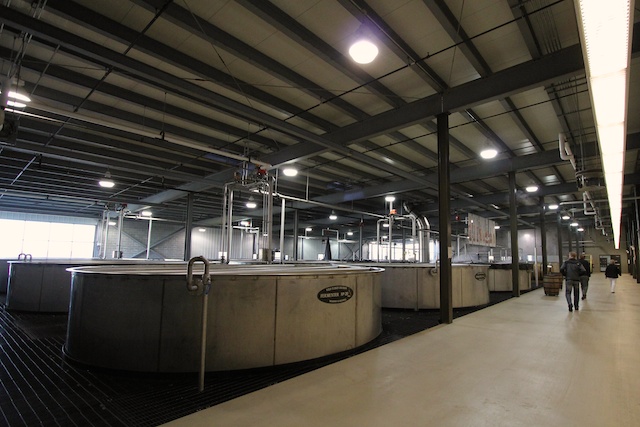
Wild Turkey's fermentation room is a huge open space full of stainless steel tanks. The Russells do not specify what the mash bill for their Bourbon whiskey is, but they do say that it's a "high rye" recipe. They start by cooking the corn, then adding in the rye, and finally the barley to unleash its enzymes. Wild Turkey, along with Four Roses, is one of the few distilleries we know of that is still refusing to purchase GMO corn. They've been sourcing their corn from Bagdad, Kentucky for 45 years and refuse to go elsewhere. Their rye is imported from Germany (after the midwest switched over to soybeans it was tough to find high-quality rye), and their barley is from a farm in South Dakota.
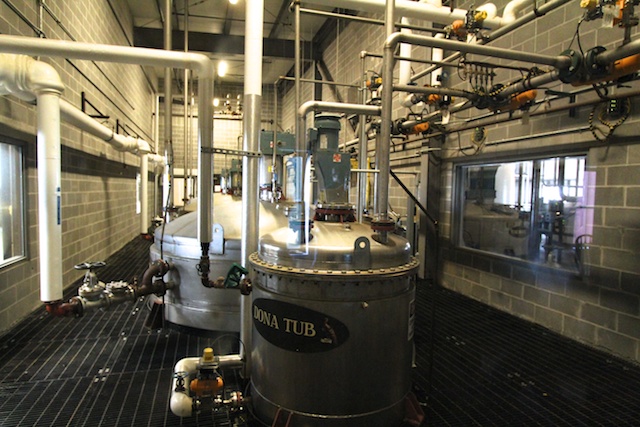
Again, like Four Roses, Wild Turkey cultivates its own yeast at the distillery using the dona tub (rather than dump in dried commercial yeast) and they've been using the same strain since 1950. Jimmy Russell, like Jim Rutledge, is adamant about the role of yeast in the ultimate flavor of the whiskey. Eddie said people had been trying to talk his father out of it for years, saying it didn't matter what type of yeast he used. I find it amusing that there are people out there who want to tell a master distiller with 59 years of experience what does and doesn't matter in whiskey production.
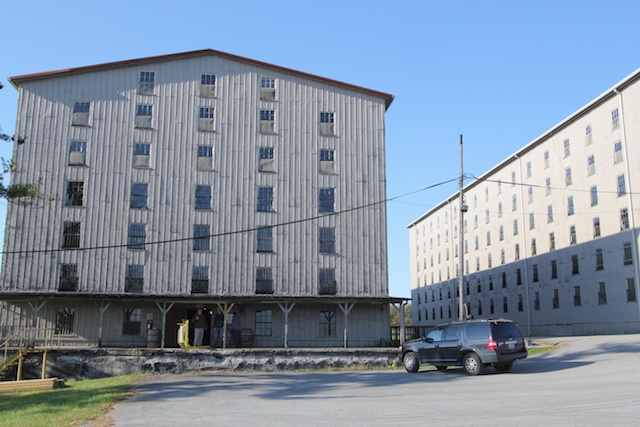
After touring the distillery, we walked with Eddie over to the oldest warehouse on the campus – the Bonded A rickhouse built in 1890. It was time to do some barrel tasting with Eddy.
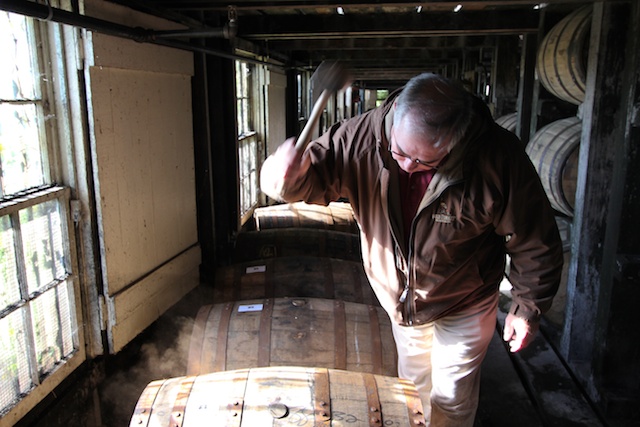
We entered to a row of barrels that had been pulled in anticipation of our arrival. Eddie got his wooden mallet and began banging the side of the bungs, popping out the corks, and filling our glasses with sweet, single barrel, cask strength Wild Turkey Bourbon. All of the whiskies were fantastic and showed incredible range. Some were smooth and mellow like candy corn, others were peppery and spicy. One was really reduced with big, chewy, tannic wood on the back end. Another was light and aromatic.
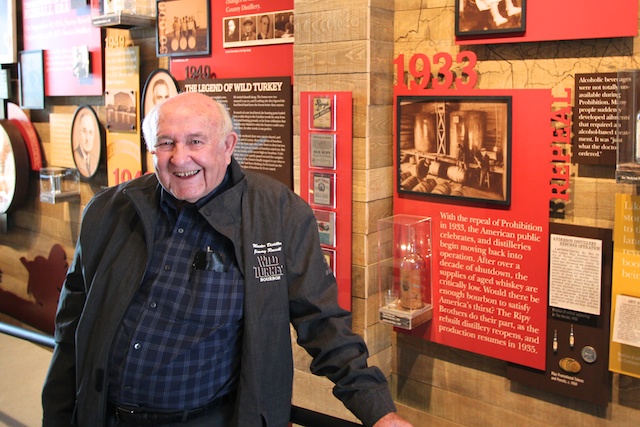
Although it's still under construction, Jimmy Russell wanted to show us the new visitor's center that will be opening soon overlooking the hills and river beneath it. At 79 years of age, the man is still going strong, travelling all over the country quite frequently in support of his brand. He had just returned from a big event in Las Vegas, but he was as enthusiastic as ever. It's really quite an honor to listen to him speak and talk about the old days of Bourbon production. I'm hoping we can do a podcast at some point.
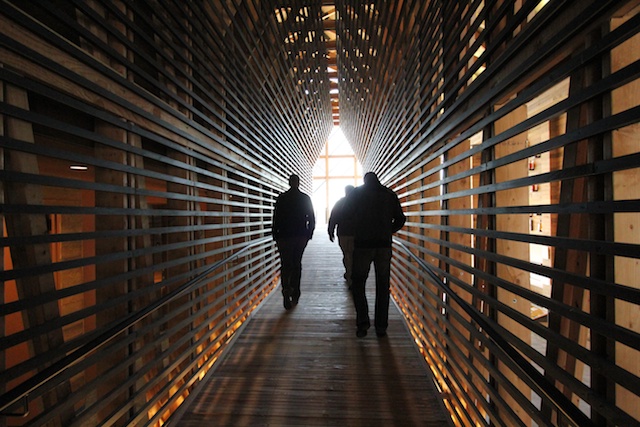
The architecture of the new building is really cool. I think the whole experience is really going to change the way consumers feel about Wild Turkey whiskey because the approach is more modern, but without sacrificing any of the great tradition of the brand. The whiskey is much more complex than the standard 101 stuff lends on, but we rarely get the chance to taste the singular versions of it. Personally, I was completely blown away by our visit. I'm very, very excited to start working more closely with both Eddie and Jimmy. Again, far and away the best whiskey we've tasted on this trip was at Wild Turkey.
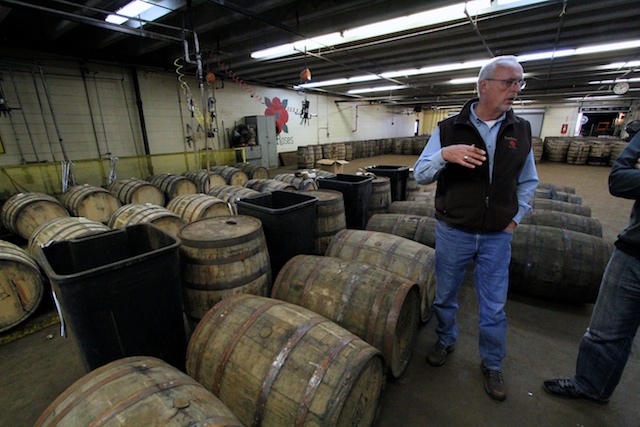
After leaving Lawrenceburg, we had to back track to a few other appointments. We had a 1 PM meeting with Max Shapira over at the main Heaven Hill offices in Bardstown, then we needed to do some barrel sampling with Jim Rutledge at the Four Roses Cox warehouses. We stumbled on to a run of OBSO barrels that really riled us up. For some reason the sweet cinnamon spices and lighter richness levels were really popping our palates. We took three barrels instantly – two 10 year olds and an older 11 year cask. All really fantastic.
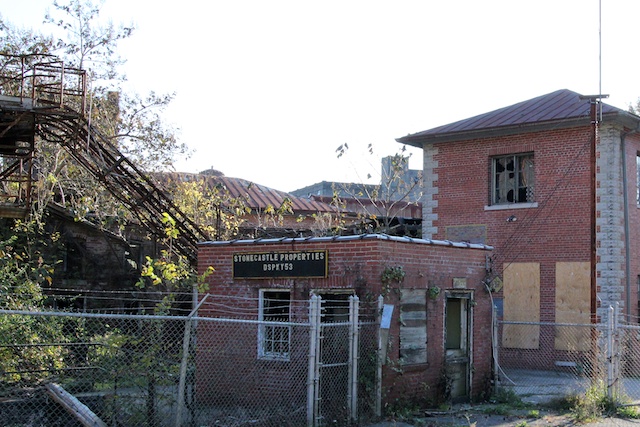
After that is was time to explore. I was shocked by what we found down the road from Woodford Reserve near Versailles. There's an entire blog post that needs to be written about Kentucky's ghost distilleries. Some of these places are just plain haunted looking. We were all shocked at the manor in which they had simply been abandoned and left alone. Maybe I can write this up tomorrow. We've still got one more day and quite a lot to do.
Until then!
-David Driscoll
